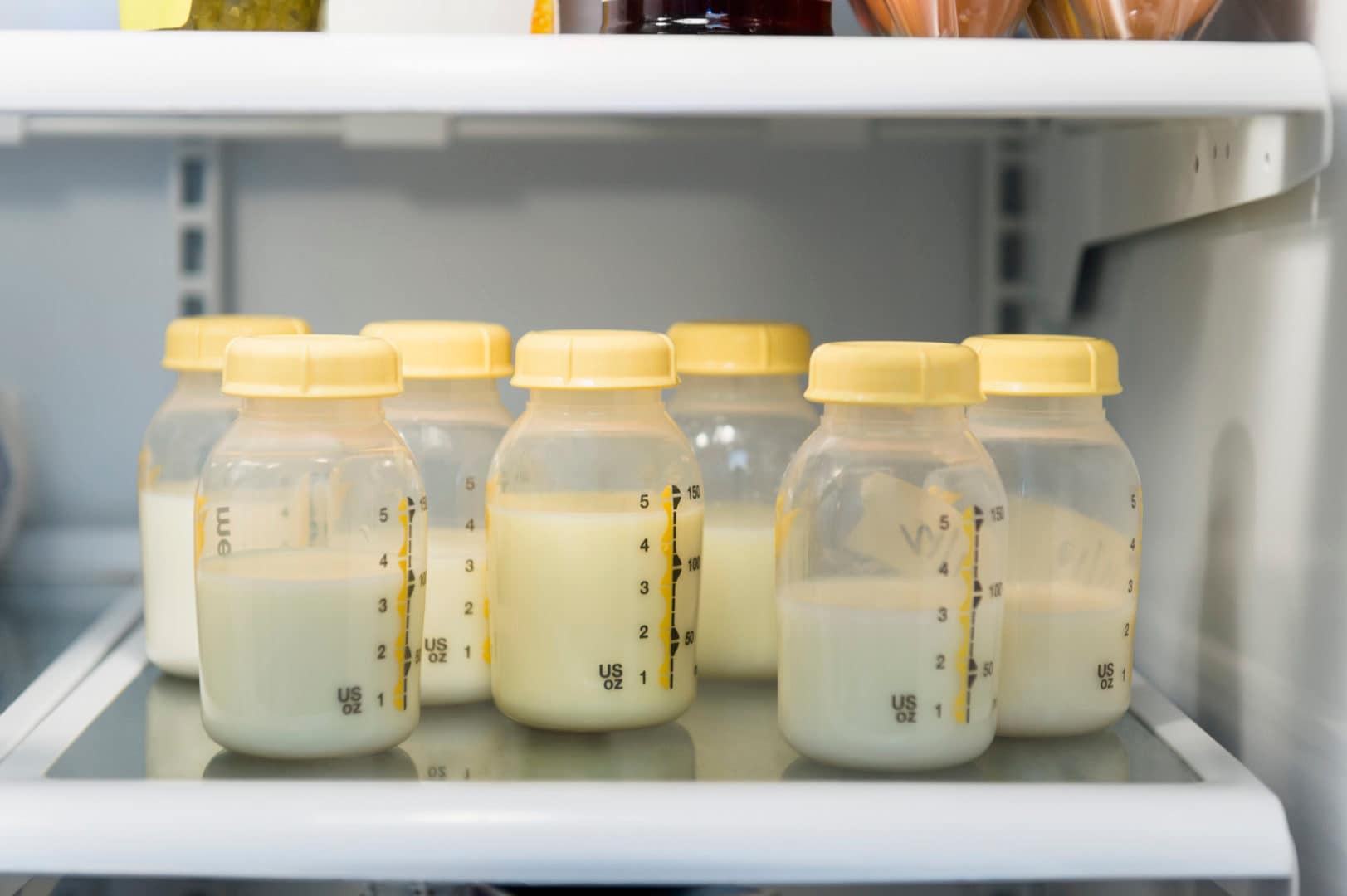If you are a breastfeeding mom returning to work, or just pumping your milk for the occasional outing, you probably have questions about the best way to store your pumped milk. And if you are leaving your baby in the hands of a caretaker, you’ll want to make sure they have access to reliable guidelines as well.
“Often, people feel really overwhelmed by all the different guidelines out there,” says Rebecca Costello, an international board-certified lactation consultant in a private practice in Ithaca, New York. “The handout from the hospital says one thing, the chart that came with their pump says another and the information they find on Google is all over the place. They’re not sure what they should actually be using.”
If you could use clarity on how to store breast milk, you are not alone. We reached out to experts to answer the most common questions breastfeeding parents have about breast milk storage, as well as where to go for the most up-to-date guidelines.
What’s the best way to store breast milk?
“The best storage method for breast milk depends on when you plan to feed it to your baby,” says Dr. Jessica Madden, pediatrician and neonatologist at Rainbow Babies and Children’s Hospital in Cleveland and Medical Director at Aeroflow Breastpumps.
Consider whether you are planning on feeding the milk to your baby within a few hours of pumping it, if you are going to wait a few days or if you need to store it for several weeks or months, advises Madden. Breast milk can be kept at room temperature, in the fridge or in the freezer, but each method has specific guidelines that must be followed so that your milk can be safely fed to your baby (more on that in a bit).
What containers can I use to store breast milk?
There are various types of containers for storing breast milk, and each has their pros and cons — there is no one “best” way, says Costello. “You want to think about your needs: how much space you have in your freezer and whether you prefer to avoid plastic,” as some types may contain unhealthy chemicals.
Options for storage include glass bottles, hard plastic bottles or BPA-free milk storage bags, explains Madden.“Containers should be completely sealed to avoid contamination and prevent leaking,” says Madden. “Avoid using disposable bottles or regular bags found around the home for storage. Your storage container should be intended specifically for storing breast milk. These do not contain harmful chemicals that can leach into milk, and they also help to preserve helpful immunoglobulins (antibodies) found in breast milk.”
Most parents prefer milk storage bags for the freezer, as they can be stacked and maximize storage space, Madden says. “If you are storing in the fridge, you can use glass or hard plastic bottles or bags, all of which should be BPA-free and specifically intended for storing breast milk,” she notes.
How long does breast milk last?
In general, you can follow these milk storage guidelines from Madden:
How long can breast milk be at room temperature?
“Freshly pumped breast milk can be stored at room temperature for up to six hours, though it’s best to use it within four hours,” says Madden. “After four hours, bacterial counts start to increase.”
How long does breast milk last in the fridge?
Madden says that you can store your breast milk in the fridge for up to five days. The fridge should be kept at 32-39 degrees Fahrenheit. “Be sure to place your milk in the back of the refrigerator, away from the door or items that could knock it over,” she recommends.
How long does breast milk last in the freezer?
Breast milk can be stored in the freezer for up to six months, according to Madden. “It will last up to 12 months in the back of a deep freezer, but using frozen milk within six months is best,” she added. “Beyond six months, there may be a decrease in protein, fat, vitamin levels, antibodies and antibacterial agents.”
For the most current information, Costello recommends bookmarking the guidelines from the Academy of Breastfeeding Medicine, which is regularly updated based on recent research.
Can I put breast milk back in the fridge after baby drinks from it?
If you are using freshly pumped milk and your baby doesn’t finish their bottle, you can store any unused milk in the fridge, and then use that milk for the next feeding.
“However, this does not apply to premature babies or babies with problems with their immune systems,” Madden advises. “These babies should never be fed a bottle of milk from a prior feed, as it may be contaminated with bacteria.”
For breast milk that has been previously stored in the fridge or freezer, Madden says there are different guidelines. This milk “should be either used completely or discarded within two hours, not placed back in the fridge,” advises Madden. “After frozen milk has been thawed, it loses its ability to inhibit bacterial growth.”
How do you know if breast milk is bad?
“We’ve all tasted or smelled spoiled milk – human milk is no different!” says Costello. For that reason, Costello recommends tasting the milk yourself to ascertain if there is an issue.
“Breast milk that is spoiled will have a definite sour smell and taste,” Madden explains. She recommends getting to know the scent of your own pumped milk so you can have a “point of comparison.” In addition, she says that any milk that contains chunks that don’t mix well when swirled should be discarded.
Can I mix breast milk from two different days?
Madden says it’s fine to mix milk from two different days, provided both days’ pumped milk are cooled before combining. If you are feeding the combined milk immediately, both batches should be at room temperature. When choosing a storage method for mixed breast milk, use the date on the older milk as a guideline.
How much pumped milk should I store at once?
Madden recommends storing your milk in smaller batches so that you don’t waste any milk that your baby doesn’t drink. Start with 1-2 ounces at first, and then you can potentially increase the amount based on how much milk your baby seems to consume per feeding.
Juliana Parker, a mom of three and a labor and delivery nurse from Mount Airy, Maryland, learned the hard way not to store too much milk at once. “I once stored 10 ounces of breast milk in a single bag,” she shared. “I thawed the entire 10-ounce bag and unfortunately didn’t use it all. Four ounces does not seem like a lot, but when you work so hard to pump the milk, even pouring one ounce down the drain is hard to watch.”
After that, she began storing her milk in 2-4 ounce batches. “If my baby needed more than what I thawed, I would quickly thaw another 2-4 ounces,” she recalls.
Where to go for more information
In addition to the Academy of Breastfeeding medicine, the Centers for Disease Control & Prevention (CDC) and Academy of American Pediatrics (AAP) offer reliable and updated breast milk storage guidelines. It’s a good idea to print breast milk storage guidelines and place them on the fridge or a location where you and your baby’s caregivers will be able to consult them.
If you have specific questions about your situation, reach out to your pediatrician or a lactation consultant.





